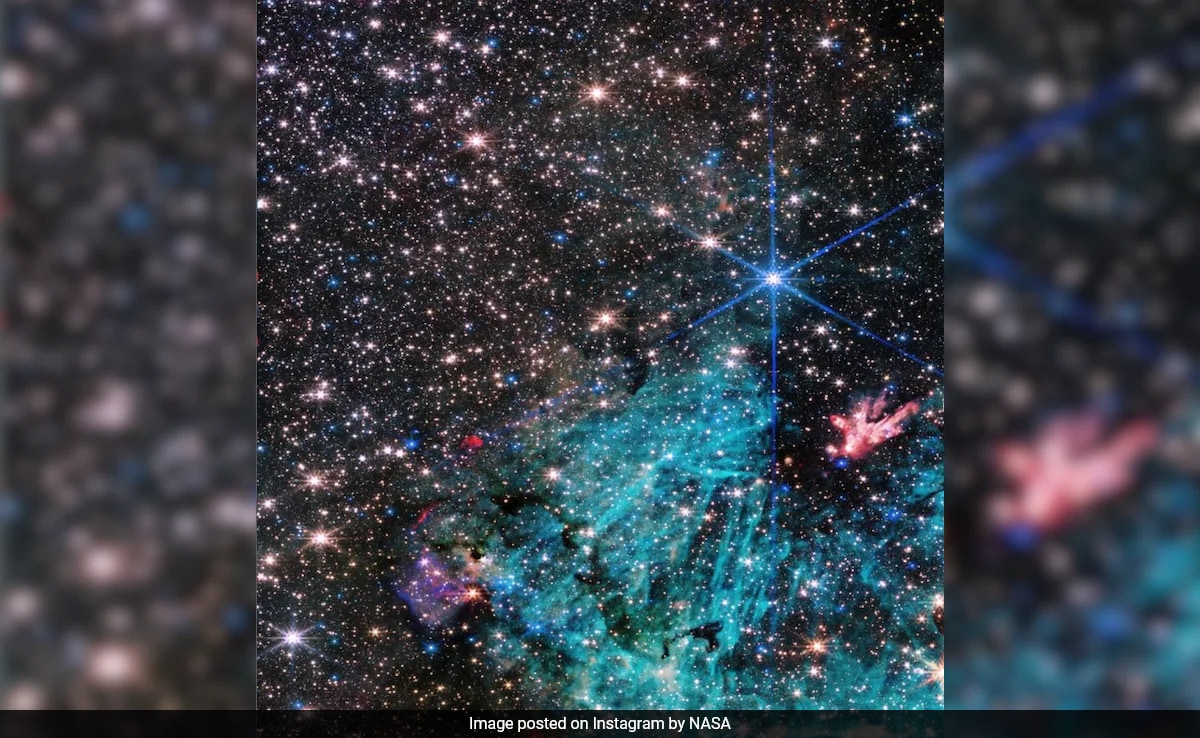
There are an estimated 500,000 stars glittering within the image
Washington DC:
An image released by NASA on Monday (local time) showcases never-before-seen details of the Milky Way. The James Webb Space Telescope photographed into the heart of the Milky Way galaxy, unveiling new features and mysteries that could help astronomers unravel more details about the early universe, CNN reported.
The Telescope was launched on December 25, 2021, orbiting the Sun, 1.5 million kilometres (1 million miles) away from the Earth, harnessing infrared light that is invisible to the human eye, NASA tells on its official website.
Astronomers used Webb to glimpse Sagittarius C (Sgr C), an active region of star formation located about 300 light-years from the galaxy’s central supermassive black hole Sagittarius A*. A light-year, equivalent to 5.88 trillion miles (9.46 trillion kilometres), is how far a beam of light travels in one calendar year.
“The image from Webb is stunning, and the science we will get from it is even better,” said Samuel Crowe, principal investigator of the observations and an undergraduate student at the University of Virginia, according to CNN. “Massive stars are factories that produce heavy elements in their nuclear cores, so understanding them better is like learning the origin story of much of the universe.”
Using the Webb telescope, scientists could gain insights into how many stars form in the Milky Way and whether massive stars are more likely to form near the galactic centre rather than the galaxy’s spiral arms.
“There’s never been any infrared data on this region with the level of resolution and sensitivity we get with Webb, so we are seeing lots of features here for the first time,” Crowe said. “Webb reveals an incredible amount of detail, allowing us to study star formation in this sort of environment in a way that wasn’t possible previously.”
Scientists have already used the telescope to detect methane and carbon dioxide on the planet K2-18 b, which could indicate signs of life.
There are an estimated 500,000 stars glittering within the image, all ranging in size and age. Among them are a cluster of protostars, or dense masses of dust and gas that are still developing and growing into full-fledged stars — including a massive protostar at the cluster’s centre that has more than 30 times the mass of the sun, CNN reported.
This panchromatic view of galaxy cluster MACS0416 was created by combining infrared observations from NASA’s James Webb Space Telescope with visible-light data from NASA’s Hubble Space Telescope.
Unlike the James Webb telescope, the Hubble Space Telescope orbits the Earth roughly 547 kilometres (340 miles) above the Earth’s surface, with the ability to record images in wavelengths of light spanning the ultraviolet to near-infrared.
The resulting wavelength coverage from the two telescopes spans from 0.4 to 5 microns and reveals a vivid landscape of galaxies that could be described as one of the most colourful views of the universe ever created.
“The galactic centre is the most extreme environment in our Milky Way galaxy, where current theories of star formation can be put to their most rigorous test,” said Jonathan Tan, research professor of astronomy and one of Crowe’s advisers at the University of Virginia, in a statement.
“The galactic centre is a crowded, tumultuous place. There are turbulent, magnetized gas clouds that are forming stars, which then impact the surrounding gas with their outflowing winds, jets, and radiation,” said Ruben Fedriani, coinvestigator of the project and a postdoctoral research fellow at the Instituto Astrofisica de Andalucia in Spain, in a statement. “Webb has provided us with a ton of data on this extreme environment, and we are just starting to dig into it”, CNN reports.
(This story has not been edited by NDTV staff and is auto-generated from a syndicated feed.)




